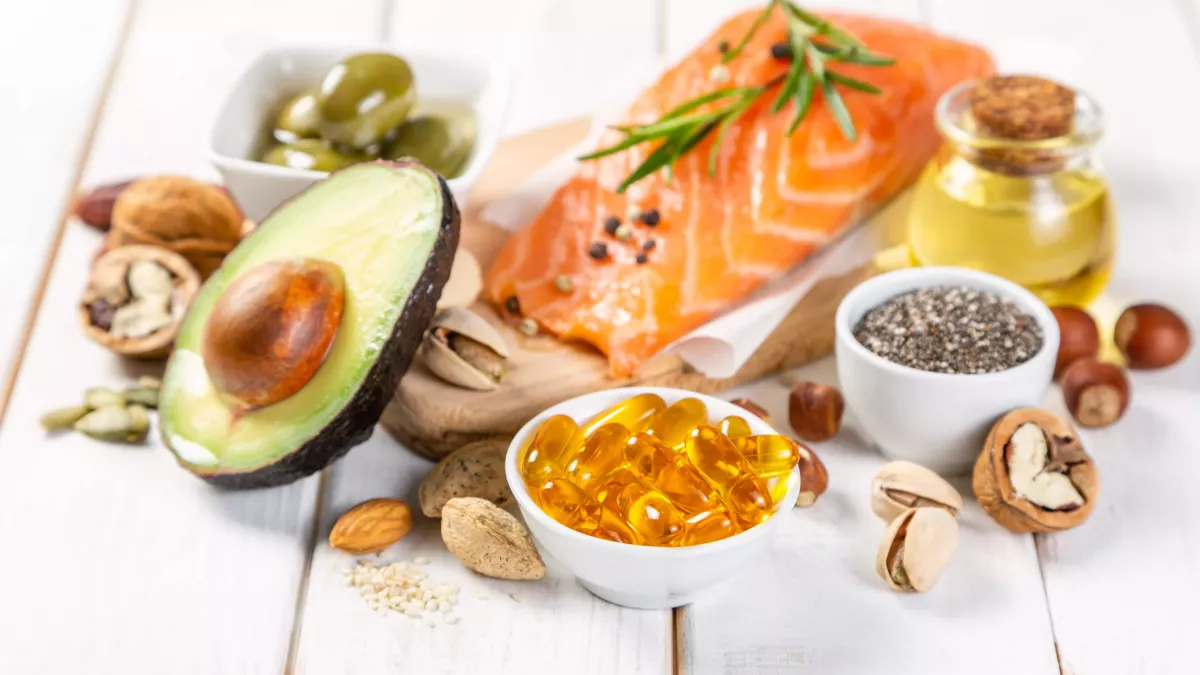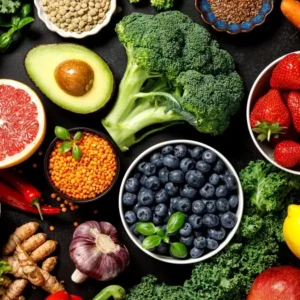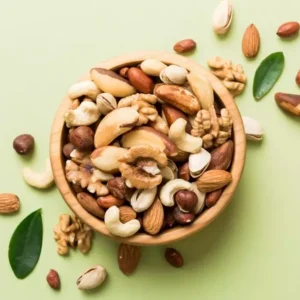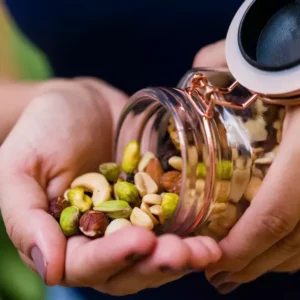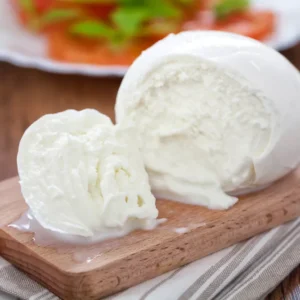Lipids: everything about lipid metabolism
Even though they have been singled out for many years, dietary lipids or fats are essential to good health. These provide the human body with “essential” fatty acids that cannot be synthesized by the body. Lipids are an important source of energy for the human body.
Characteristics of lipids:
- There are saturated fats and unsaturated fats
- Omega-3 and 6 are said to be essential because the body cannot produce them
- Lipids are found mainly in vegetable oils, butter, industrial products, etc.
- Constituents of all cell membranes in the body
- A deficiency or excess can have serious consequences
Why eat foods that contain lipids?
Definition of lipids
Some fatty acids are called essential because the body cannot synthesize them. These are omega-6 (linoleic acid) and omega-3 (alpha-linolenic acid) fatty acids. They play an important role in the membranes of cells in the human body. The ratio between omega-3 and omega-6 fatty acids is very important because an imbalance between these two types of fatty acids can be harmful. For example, omega-6 consumed in excess prevents omega-3 from exerting their beneficial effect on the cardiovascular level.
Monounsaturated fatty acids are not essential fatty acids but are a key component of nervous system cells. They are mainly found in olive oil, avocado and nuts and seeds.
Saturated fats as well as trans fats are not essential fatty acids and are even recognized in various studies as having harmful effects on LDL cholesterol levels and cardiovascular risk. We must therefore limit them as much as possible.
Roles of lipids in the body
Energy
Unlike proteins and carbohydrates which provide 4 kcal per gram, fats provide 9 kcal per gram. They therefore contribute to covering energy needs.
Structural role
Lipids, and especially unsaturated fatty acids, are the major constituents of cell membranes and cells of the nervous system. They also ensure the plasticity and elasticity of the skin because they are important constituents of the cells of the dermis.
Transport of fat-soluble vitamins
In the body, certain vitamins can only be transported with the help of lipids. They are called fat-soluble vitamins: vitamins A, D, E and K.
Hormone synthesis
Fatty acids allow the synthesis of certain steroid hormones, directly derived from cholesterol: estrogens, testosterone and cortisol. Prostaglandins also derive from lipid molecules.
Lipid assessment and exploration of a lipid abnormality
A lipid profile allows you to take stock of the lipids present in the blood and to know whether they are in excess or not. LDL cholesterol, HDL cholesterol and triglyceride levels are the most studied lipid levels. The results of the lipid profile give a good idea of the cardiovascular risk. Indeed, too high a level of total cholesterol or triglycerides is a risk factor for cardiovascular accidents that must be taken seriously.
Lipid digestion
Once ingested, the lipids will be emulsified and mixed with bile salts in the intestine. They form micelles capable of entering the cells of the small intestine. They then emerge in the form of chylomicrons. Chylomicrons release lipids into the blood, where they circulate linked to lipoproteins: HDL, LDL, etc. It is the presence of these lipoproteins that we measure during a blood test in order to detect a possible lipid abnormality.
Foods rich in lipids
The main sources of fat are butter, margarine, vegetable oils, fried foods, pastries, and certain prepared meals. As they enhance the flavor and texture of foods, they are used extensively in the production of industrial foods.
Here are details of the lipid content of certain foods:
|
Food |
Portions |
Quantities (g) |
|
Donut, cake type, sweet coating Butter Commercial chocolate cookies Regular ground beef Crème 35% Ice cream Croissant chicken nuggets Fromage type cheddar Vegetable oil (all varieties) Egg yolk Whole milk (3.25% fat) Margarine Pecan nuts Pâté Whole milk yogurt |
1 (57 g) 5 g 2 biscuits (20 g) 100 g 15 ml (1 tbsp) 125 ml (1/2 cup) or 70 g 1 medium 60 g 6 (110 g) 50 g 5 ml (1 teaspoon) 1 (17 g) 250ml (1 cup) 5g 125ml (75g) 100 g or ¼ pâté 175 g (3/4 cup) |
14,4 4,1 4,7 21,5 5,3 7,7 12,6 21,4 16,6 4,6 5,6 8,4 3,8 15 10,8 18 |
Sources of omega-3 include fatty fish, flax and chia seeds, fortified eggs, canola oil and walnuts. Omega-6 fatty acids are mainly found in vegetable oils such as grapeseed, corn, safflower or sunflower oil.
 Receive every day
Receive every day
advice from our experts
to take care of you

Use of lipids
How much fat should you consume per day to lose weight or maintain a stable weight?
For healthy adults, here are the nutritional recommendations relating to lipid consumption:
| Recommended nutritional intake (ANC) for healthy adults | |
| Total lipids | 35 to 40% of the total energy intake (AET) |
| Saturated fatty acids | <12% de l’AET |
| Palmitic, lauric and myristic acid | <8% de l’AET |
| Oleic acid (monounsaturated) | 15 to 20% of the AET |
| Omega-6 | 4% of the AET |
| Omega 3 | 1% of the AET |
| DHA | 250 mg/j |
| EPA+DHA | 500 mg/j |
Lipid-based food supplements
Certain food supplements based on Omega-3, 6 and 9 may be indicated in the preventive or curative treatment of certain cardiovascular or neurodegenerative pathologies. In any case, before considering lipid supplementation, it is essential to seek the advice of your doctor.
Lipids and bodybuilding
For athletes and particularly in bodybuilding, a good intake of quality fatty acids is essential. Lipids make it possible to synthesize hormones, accelerate metabolism and promote muscle gain. A varied and balanced diet is enough to cover needs. however, supplementation with essential fatty acids can, in certain cases, be a good solution.
Adverse effects of lipids
Lipid deficiency
Insufficient dietary fat intake can lead to growth disorders and an increased risk of chronic diseases. If insufficient intake of lipids is also accompanied by insufficient intake of carbohydrates and proteins and therefore energy, this can lead to malnutrition. Adequate fat intake is especially important during childhood and pregnancy. In addition, a diet that is low in lipids but very high in carbohydrates could reduce HDL cholesterol levels, in addition to increasing the glycemic and insulin response after ingestion of food.
Excess lipids
It is known that a diet high in fats that exceed energy requirements can lead to obesity. There is also a link between high fat intakes and an increased risk of cardiovascular disease, cancer and insulin resistance leading to type 2 diabetes. The type of fatty acid consumed in excess plays a determining role in this relationship.
Interactions with other nutrients
Lipids slow down the digestion and absorption of carbohydrates, so they have the effect of reducing the glycemic index of a meal. Between them, certain lipids can compete. This is the case for Omega-6 and 3. Omega-6 consumed in excess blocks the beneficial action of Omega-3 and has a pro-inflammatory effect. Finally, lipids are essential for the absorption of fat-soluble vitamins A, D, E and K.
Chemical properties
Lipids make up the fat mass. Depending on their molecular structure, they can be solid or liquid in their natural state. Saturated fatty acids are solid fats because they do not have double bonds, making them particularly stable and hard. On the contrary, mono and poly unsaturated fatty acids are liquid fats at room temperature; their double bonds make them unstable and particularly sensitive to oxidation. Lipids can be hydrophobic or amphiphilic, meaning they have one hydrophilic group and one hydrophobic group.
Historical
Nutrient History
In the 1850s, scientists began to discover the role of the pancreas in lipid digestion. It was only at the end of the 1920s that the first studies demonstrated the more or less serious consequences of deficiencies in different lipids: reproductive disorders, hormonal disruptions, etc. Researchers are then beginning to understand the essential nature of certain fatty acids, which the body is not capable of synthesizing. However, it was not until 1965 that lipid metabolism interested biochemists. For a long time, lipids will be demonized and held responsible for the mechanisms of weight gain. Fortunately, we now know that this is not the case and that certain fats want us much more good than harm.

Dietitian Nutritionist
February 2014
93% Readers found this article helpful And you ?
Was this article useful to you?
Read also :

Peanut oil – Composition, Use, Benefits
read more

Castor oil – Composition, Use, Benefits
read more

Omega 3 – Benefits, Foods, Indications, Supplements
read more

Omega-9 – Benefits, Use, Dosage, Tips
read more

Vitamin B9 (folic acid) – Deficiency, Benefits, Food sources
read more

Vitamin B9 or folic acid: everything about this vitamin
read more



